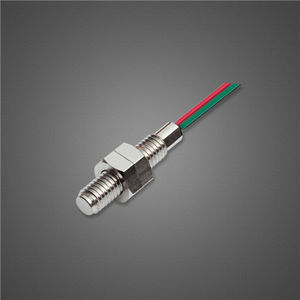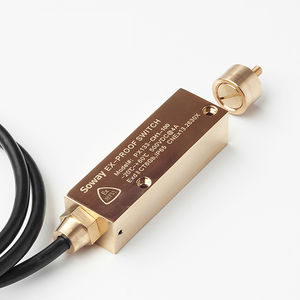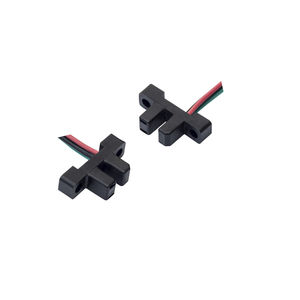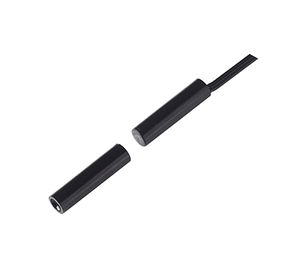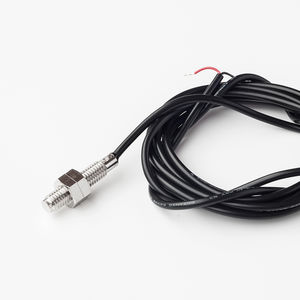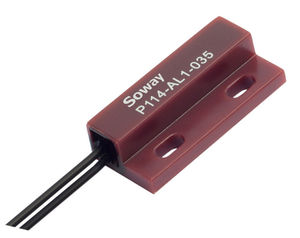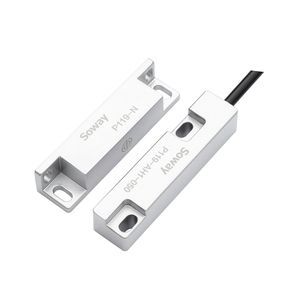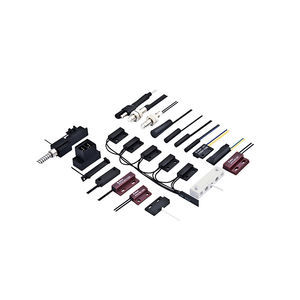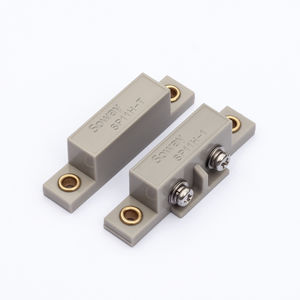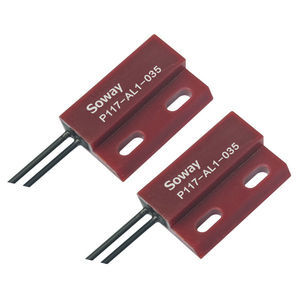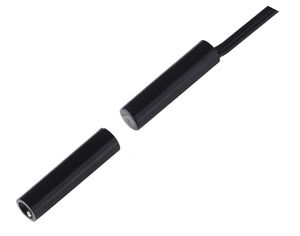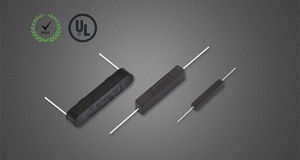

- Company
- Products
- Catalogs
- News & Trends
- Exhibitions
Inductive proximity switch SPI magneticcylindricalM12
Add to favorites
Compare this product
Characteristics
- Technology
- inductive, magnetic
- Shape
- cylindrical
- Diameter
- M12, M18, M30
- Supply voltage
- 12 Vdc
- Material
- aluminum
- Protection level
- IP67, anti-corrosion
- Other characteristics
- 3-wire, non-contact
- Measuring range
Min.: 2 mm
(0.08 in)Max.: 50 mm
(1.97 in)- Process temperature
Min.: -25 °C
(-13 °F)Max.: 70 °C
(158 °F)
Description
Inductive proximity switch utilizes the principle of mutual inductance of metal conductor and alternating magnetic field. The detection coil located at the front end of the sensor produces high frequency magnetic field. When the metal object approaches the magnetic field, eddy current is generated inside the metal object, which results in the energy attenuation of the magnetic field. When the metal object is constantly close to the sensor's inductive surface, the energy is absorbed and the attenuation is caused. When the attenuation reaching a certain level, the sensor switch is triggered to output signal, thereby achieving the purpose of non-contact detection.
Inductive proximity sensors are truly noncontact sensors,since they directly detect the magnetically permeable and/or conductive item to be measured. They operate at a relatively high frequency, changes in the coil circuit due to the magnetic permeability of a ferromagnetic target or by eddy current dissipated in a conductive target can be detected. The signal from most proximity sensors is a switched output that switches when the target comes within the calibrated range. Continuous functions are also possible but are typically nonlinear and affected by the shape and size of the target.
Features:
1. non-contact detection method, no wear.
2. with special IC design and have stable performance.
3. anti-mechanical collision and anti-corrosion.
Applications:
- Detection gate opening/closing
- Detection cam position
- Detection of moving aluminum stencil
- Unit count
Catalogs
Related Searches
- Proximity switch
- Cylindrical proximity switch
- Position transducer
- Inductive proximity switch
- Tilt sensor
- IP67 proximity switch
- Linear position transducer
- Displacement transducer
- Analog output position sensor
- DC proximity switch
- Linear displacement transducer
- Digital tilt sensor
- Non-contact position transducer
- MEMS tilt sensor
- Threaded proximity switch
- Magnetic position transducer
- Magnetic proximity switch
- Multi-axis inclination sensor
- Industrial position sensor
- Rectangular proximity switch
*Prices are pre-tax. They exclude delivery charges and customs duties and do not include additional charges for installation or activation options. Prices are indicative only and may vary by country, with changes to the cost of raw materials and exchange rates.



